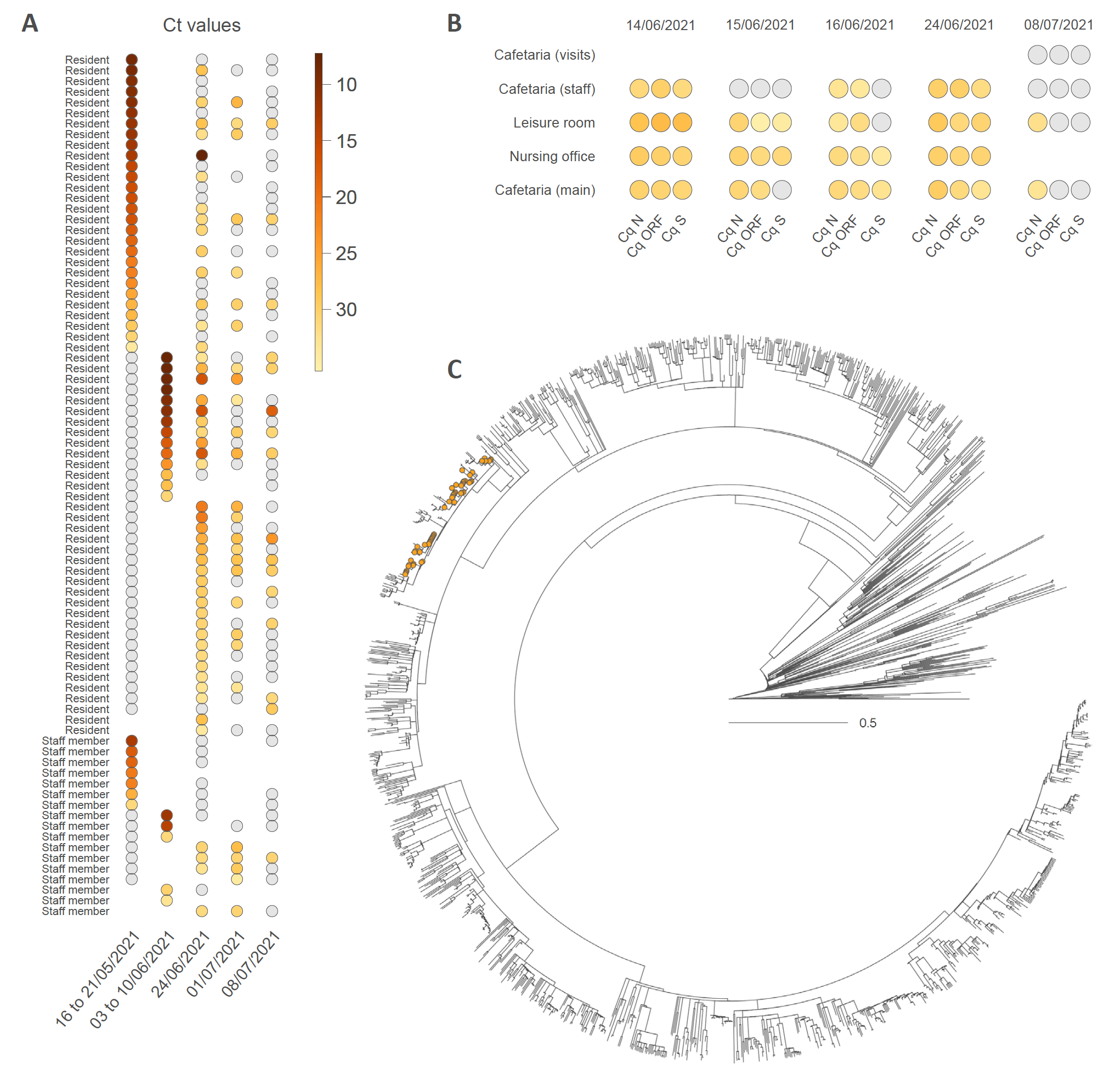Our study on post-vaccination nursing home COVID-19 outbreaks has been published in Nature Aging
Published on May 22, 2023, by Simon Dellicour
Our new study on post-vaccination nursing home COVID-19 outbreaks has been published in Nature Aging. Coronavirus Disease 2019 (COVID-19) vaccination has resulted in excellent protection against fatal disease, including in older adults. However, risk factors for post-vaccination fatal COVID-19 are largely unknown. In the new study, we comprehensively analysed three large nursing home outbreaks (20–35% fatal cases among residents) by combining severe acute respiratory syndrome coronavirus 2 (SARS-CoV-2) aerosol monitoring, whole-genome phylogenetic analysis and immunovirological profiling of nasal mucosa by digital nCounter transcriptomics. Phylogenetic investigations indicated that each outbreak stemmed from a single introduction event, although with different variants (Delta, Gamma and Mu). SARS-CoV-2 was detected in aerosol samples up to 52 d after the initial infection. Combining demographic, immune and viral parameters, the best predictive models for mortality comprised IFNB1 or age, viral ORF7a and ACE2 receptor transcripts. Comparison with published pre-vaccine fatal COVID-19 transcriptomic and genomic signatures uncovered a unique IRF3 low/IRF7 high immune signature in post-vaccine fatal COVID-19 outbreaks. A multi-layered strategy, including environmental sampling, immunomonitoring and early antiviral therapy, should be considered to prevent post-vaccination COVID-19 mortality in nursing homes. Read the whole study here.

Overview of the outbreak in nursing home A (Delta/B.1.617.2). We report the evolution through time of Ct values measured in both infected residents and staff members (a) and aerosols analyzed in various sections within the nursing home (b). Gray dots refer to negative PCR results. c, Timescaled phylogenetic analysis involving Delta (B.1.617.2) genomes sampled and sequenced from this outbreak reveals that all 58 full genomes originating from nursing home A are clearly clustered within the overall phylogenetic tree (orange dots), suggesting a single introduction event. The phylogenetic tree is time calibrated, meaning that branch lengths are in units of time (year).
Reference: Cuypers L, Keyaerts E, Hong SL, Gorissen S, Soraya MM, Marick S, Van Elslande J, Weemaes M, Wawina-Bokalanga T, Marti-Carreras J, Vanmechelen B, Van Holm B, Bloemen M, Dogné JM, Dufrasne F, Durkin K, Ruelle J, De Mendonca R, Wollants E, Vermeersch P, COVID-19 Genomics Belgium Consortium, Boulouffe C, Djiena A, Broucke C, Catry B, Lagrou K, Van Ranst M, Neyts J, Baele G, Maes P*, André E*, Dellicour S*, Van Weyenbergh J* (2023). Immunovirological and environmental screening reveals actionable risk factors for fatal COVID-19 during post-vaccination nursing home outbreaks. Nature Aging 3, 722-733